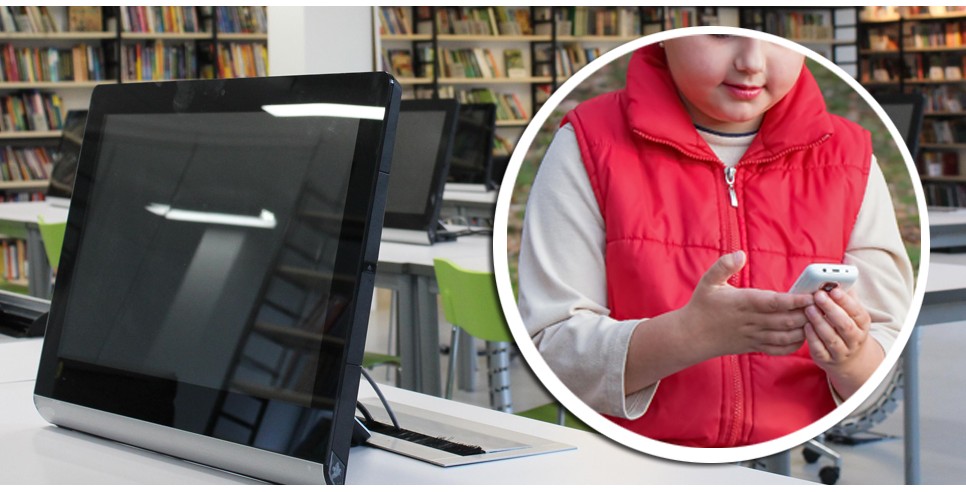
Having a digital home, perhaps a digital presence, to many seems like just another part of everyday life. To others, merely having access or connectivity would be a major step up, a leap across a digital divide.
Digital wherewithal is what separates the haves from the have-nots.
Some take digital access for granted. For the Haves this is everyday life. Connectivity is everywhere, in pockets, purses, cases on a belt, or on a device that connects. To many this is second nature: grab a phone or tablet, look up something to answer a question, solve a wager, check on a delivery, make a reservation or buy a ticket.
For the Have-nots it is a different story. This is not the issue of mere casual use. It affects opportunity, education, and advancement. The problem this poses for children is a cultural and economic issue of great magnitude.
FCC research uncovered the stark facts of this digital divide in the US: seven of every ten teachers now assign homework that requires web access. Yet 33% of students in grades K through 12, mostly from low-income households, have no online access at home.
What are the strategies to address, or to overcome the issue? Some are public, some are private. School buses equipped with WiFi park overnight allowing students access so they can get online to study, or in some cases, complete their homework. Libraries, often thought of as becoming outmoded in an electronic and increasingly paperless society, are crowded with children studying or doing homework assignments. Some fast food joints are packed with children with their eyes glued to screens and fingers active on keyboards, using laptops, phones or tablets to finish homework, study, or work on school projects.
These are examples of Digital Strategy put into effect by the children who fall into “Have-nots” category of the Digital Divide. Their families may not be able to afford high speed internet access, or in some cases even a smart phone or a computer. Library computers or shared and borrowed devices are put to use, to keep up with their fellow students, the “Haves” in an era of connectivity –and devices-- as an expectation. The strategy is to acquire access. The tactics range from locating and making use of available connectivity, be it via parked school buses, public libraries, Starbucks and other internet cafes, or public WiFi wherever it may be.
Children come up with methods of all sorts to acquire connectivity. Hanging out at a Starbucks, storing WiFi passwords of restaurants and other places they might be able to hang out. Sometimes it means sitting in schoolyards near enough to the school to acquire online access, or sitting beside libraries after closing hours, if the connectivity is available 24/7.
To a certain degree the Have-nots are forced to acquire through innovation and tactical thinking and planning. The lack of access creates a circumstance in which creativity and opportunism pave the way to achieve, to succeed.
Creativity is part and parcel of these digital strategies. Trying out for, or participating in, after school activities offers a certain guaranteed amount of down time (play rehearsals, cheerleading, band practice, etc.). That down time offers onsite access to connectivity. Sports also works this way: team practice enables students to spend more time in the buildings with connectivity.
Libraries, coffee shops, some eateries (Panera, Pain Quotidien, McDonald’s, Pret a Manger, etc.) even public spaces of various sorts, offer connectivity. In many ways it is more than an amenity, it provides a public resource. Those who are without cross over to the Haves (from the Have-nots) when they avail themselves of these resources.
The economic impact can be seen through numerous other lenses. The long term economic view is often mitigated by prognosticators’ forecasts of ubiquitous connectivity at minimal cost. Public WiFi and sponsored or advertiser supported connectivity may bear that out. Many retailers have embraced the concept of offering shoppers WiFi in their stores. Target, J.C.Penney, Saks, Macy’s, Sam’s Club and Nordstrom now make WiFi available. Providing connectivity is not meant to address the divide. Rather, it is a response to the widespread use of online information to inform consumer buying decisions.
Consulting firm Deloitte, in a study about the new digital divide, looked at Digital’s Influence on In-Store Sales. “We are at a tipping point in retail — a point where digital channels should no longer be considered a separate or distinct business. Instead, digital is fundamental to the entire business and the entire shopping experience, in and out of the store.” In the report Deloitte details the impact of digital on areas of retail success: Traffic, Conversion, Order Size and Loyalty.
Be it the Haves or the Have-nots, web surfing and the increase in mobile as an everyday part of life are a part of these trends. The use or access may be of less throughput or quality, but Internet usage occurs even among low income families. Casual browsing or hunting for sales and deals crosses all economic levels. This translates into spending and the impact of connectivity on Commerce.
Digital Wherewithal, be it web access, web presence or mobile availability, is a part of everyday life. Advocacy groups, the FCC and others seek to create greater access, cheaper, faster and more broadly available. Digital fluency, and even the ability to apply online for a job, increase in importance with each passing day. The digital divide will lessen over time as the prices of connectivity and devices come down, or as public and private initiatives address the need for the US to catch up with other countries where connectivity is fast, available and abundant. Time will tell, as economic and other social factors force the issue.










